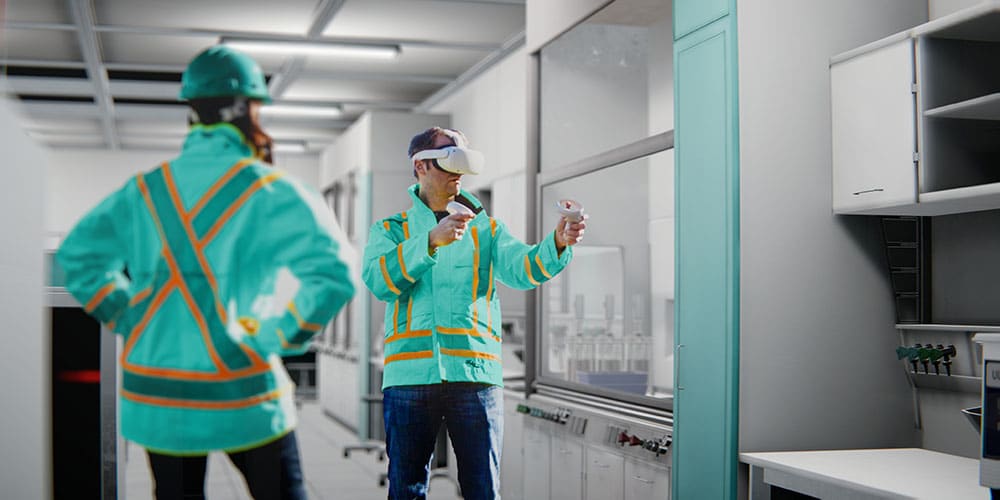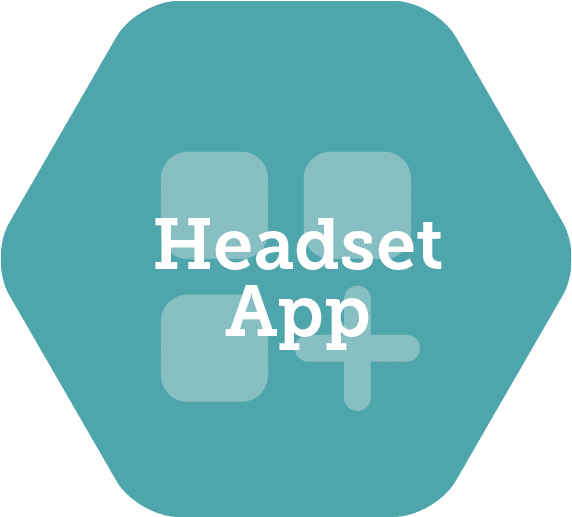VR training is taking off in organizations around the world. It provides the long awaited answer to the question “how can we provide our team with effective training that mimics the job that they will be doing?”. Unfortunately, the way VR training is created today is filled with pitfalls and challenges that make it very hard for organizations to implement.
If you have tried a VR training pilot, project or even dug into what it takes to create VR training, you will be all too familiar. We call this current state VR Training 1.0. In this post we will provide you with the long awaited solution, VR Training 2.0. We will compare 1.0 vs 2.0 in three key areas, content creation, content updating and scaling. As you learn more about VR Training 2.0, we hope it feels like a cold glass of water on a hot summer day.
What is VR Training 2.0?
VR Training 2.0 is the most scalable and innovative way to create VR training. It uses a group of tools that allow you to break the typical process for producing VR training. The tools consist of a Unity SDK, non-technical authoring tool, as well as non-technical deployment and analytics tools. Their key to success is that it puts your non-technical training experts back in charge of their training.

VR Training 1.0 vs VR Training 2.0
Content Creation
VR Training 1.0
Your non-technical training experts control over the creation of content is like a game of telephone. They tell a developer or project manager the training that they want to see. This includes the 3D environment that training will take place in as well as all the training that will take place in the environment. They will provide documentation and even videos. From there, the developers who are not experts in training, especially your training, will translate what you requested into VR. Inevitably things are missed, changed or just don’t work in the new medium. Your training team won’t know any of this until the build of the training is provided weeks, but usually months, later.
VR Training 2.0
Your non-technical training experts provide developers with the photos and details of the environment that the training will take place in, not the training itself. The developers will create the environment but that’s where their role ends. Once the environment is created, all the training that happens in the environment can be created by your training experts using a non-technical authoring tool. That means they can easily test as they build out the training just like they would with e-learning. They are back in charge of the content creation process.
Content Updating
VR Training 1.0
You’ve made it through the long and difficult content creation phase and now you’re successfully running your VR training. As can be expected, a few weeks into running it, a change is needed. What does your team do? They email the developer team and let them know that they need a change. There is some back and forth to confirm exactly what your team means and the developers say they will get it on the schedule. The developers provide you with a quote and let you know they have time in 3 weeks to make the change. Once your training experts get the new build of the VR training, they have some more feedback as the developers didn’t quite get it right, and the back and forth continues. Seven weeks later, your training experts are happy with the changes and want to deploy the training scenario. The developers provide you with a new APK for the training and your training experts need to update it on all of the headsets (note: the headset updating process varies based on the hardware you use). Once that’s complete, you finally have your updated training running, though it cost more and took longer than hoped for.
VR Training 2.0
Your VR training is up and running. Employees are loving it but just like you expected, a few weeks in and changes are needed. To manage those changes, your training experts log onto the online authoring tool and determine what changes they want to make. They test them in their headsets then tweak a little bit further. Finally they are happy with the changes and hit publish. Now the next time a learner starts the training, they will see the new updated version with the changes. That may have taken a couple of minutes, hours or even a day depending on how big the changes were but your team was completely in charge. No back and forth, no invoice and no long timelines.
Scaling
VR Training 1.0
Congratulations! Everyone loves your VR training pilot! You are the hero! Now your CEO wants to make this a company wide initiative and do 10 times the training scenarios for the next quarter. Because it’s VR Training 1.0, you bring together your development team (maybe internal or a partner) and training experts to tell them the good news. The developers aren’t so excited. In order for them to do 10 times the training, they will need close to 10 times the budget and time. You know that not enough budget was allocated so you have to go back to your CEO and let them know that you will have to scale back your efforts.
VR Training 2.0
Congratulations! Everyone loves your VR training pilot! You are the hero! Now your CEO wants to make this a company wide initiative and do 10 times the training scenarios for the next quarter. You breathe a sigh of relief because you planned for this. You let your developer team know (either internal or a partner) that you will need two more 3D environments for the new modules. From there your team gets to work. 4 out of 10 modules will be in the same initial 3D environment you created. They start authoring the new training right away. Based on your plan, you need another training expert to get the number of modules done on time. They are upskilled on the authoring tool in just over a week. You successfully create 10 modules before the start of the quarter and stick to the budget. Your CEO is thrilled and starts to think about how to further scale VR training through the organization.
With VR Training 2.0 no longer do you have to compromise on time, cost, control or quality. You are future proofing your training and most importantly putting your training experts in charge of the training, no middleman required.
Want to see VR Training 2.0 in action? Book a demo here.
Latest Posts
Stay in the Know
Want to stay up-to-date with what is going on in the world of immersive training? Subscribe to the Motive Blog.
Ready to revolutionize your training program?
We’re ready to show you how seamlessly you can create, edit and deploy VR training modules. Our team is standing by to help you revolutionize your training program.





